Honolulu’s long-delayed rail line, also known as HART, will finally reach the airport this month. On October 16, travelers landing at Honolulu Airport will see the Skyline trains gliding above the runways and wonder if they should bother. The new link connects the terminals to Oahu’s west side by rail for the first time, but not to Waikiki, and that’s where most visitors are headed. The city calls it a new chapter in island mobility. For travelers, it may be a test of patience, practicality, and promise.


The $3 ride versus Hawaii’s $50 airport reality.
A taxi or rideshare from HNL to Waikiki can cost $30 to $50 or more and take 30 to 60 minutes in traffic. A shared shuttle runs up to $30 per person.
Starting next week, the new rail ride will cost just $3, or $7.50 for an entire day of unlimited travel on the same HOLO card used for TheBus. That’s an astonishing contrast in a destination known for expensive rental cars and even more costly resorts.
The problem is what happens after you tap off. The train ends at Middle Street in Kalihi, still five miles short of Waikiki. From there, travelers need to take a bus, a rideshare, or a hotel shuttle to complete the trip. The entire journey may still take 45 to 60 minutes, sometimes longer than a cab in bad traffic, but with more steps, stairs, and guesswork.
One repeat visitor summed it up: “I’ll try it once, just to avoid the taxi chaos. But if I’m dragging bags after a nine-hour flight, probably not again.”
What opens October 16.
The city’s Department of Transportation Services will take over the new segment, running from Aloha Stadium through Pearl Harbor, the airport, Lagoon Drive, and Middle Street. Lelepaua Station, the one built directly beside the airport terminals, will finally open to the public. A pedestrian bridge connects to Terminal 1 near Hawaiian Airlines check-in, with elevators and escalators for luggage.
Don’t expect the gleaming efficiency of Tokyo or Singapore. This is Hawaii, which means it’ll work, mostly, with a few hiccups that become part of the story. The elevators will break. They always do. The question is whether the city fixes them in days or months.
Service will run from around 4 a.m. until 10 p.m. daily. Trains arrive roughly every ten minutes at peak times and every fifteen minutes off-peak. The trip from Lelepaua to Aloha Stadium takes about five minutes, while East Kapolei is twenty-five minutes away. The city estimates that more than 2,000 daily riders will start or end their trip at the airport.
Why it doesn’t go to Waikiki (yet).
When Honolulu first planned the rail line, the route was supposed to have a huge visitor-centric component. That was to stretch all the way to Ala Moana Center, linking directly to hotels and shopping. Funding shortfalls, legal delays, and construction challenges trimmed that ambition.
The third segment, to downtown and Ala Moana, is still years from completion. Ala Moana is still on the map, at least in theory. That route isn’t dead, just indefinitely delayed. Unless and until new funding arrives, the train that “will one day reach Ala Moana” may stay five miles short for another decade or more. That leaves visitors stranded short of the finish line indefinitely.
Commuters see the delay differently. One airport worker told us, “We’ve waited our whole careers for this. Even if it stops at Middle Street, that’s still progress.” Locals hope fewer cars on Nimitz Highway could help reduce gridlock, but they also worry the train will be another symbol of government waste if ridership disappoints.


How to use it.
Travelers can buy a HOLO card at airport vending machines, ABC Stores, or 7-Eleven locations. The $2 reusable card stores fare value electronically, with automatic caps of $7.50 per day or $30 per month. The same card works on both the rail and TheBus. The fee feels petty for a $10 billion project, but the card pays for itself quickly if you plan to use public transit more than once.
Lelepaua Station has elevators, ticket machines, and bike racks. Riders can take luggage aboard, though there are no dedicated baggage areas. Eating, drinking, and smoking are prohibited. Real-time information screens display the next train arrival. The line currently has no onboard restrooms or storage lockers, though Rail cars do have Wi-Fi and air conditioning.
Transfers to TheBus can be made at Middle Street or Lagoon Drive stations, where multiple routes continue toward downtown, Ala Moana, and Waikiki. The total fare remains capped, so adding a bus leg costs nothing extra within 2.5 hours of tapping on.
How it compares with other cities.
If you’ve taken Vancouver’s Canada Line from YVR or San Francisco’s BART straight into downtown, you’ll find Honolulu’s version incomplete. Those trains deliver you to the urban core. This one leaves you short of it, ending at Middle Street rather than near hotels or major attractions.
If you haven’t tried it yet, the ride itself is impressive. The ride is smooth, quiet, and has some scenic views. Elevated tracks pass over Pearl Harbor, offering broad views of the water, planes, and skyline. For visitors staying near the new route or heading toward west Oahu, it’s a calm, low-cost alternative to the highway crawl.
Will visitors actually use it?
That question may determine whether the entire $10 billion project is considered a success. Hawaii’s travelers tend to value ease and comfort, not complexity. Carrying luggage across bridges and waiting on platforms isn’t how many people picture the start of an island vacation.
There are also practical concerns. Security presence remains limited to cameras and patrols, and some visitors may feel uneasy navigating an unfamiliar system late at night or with heavy luggage. For families with children or older travelers, reliability and clarity will matter most.
Still, curiosity counts for something. With prices everywhere rising, some visitors will give the train a try to see if it works. A family could save well over a hundred dollars compared with a taxi round trip, and that may be reason enough. Whether it becomes routine or just a one-time experiment will say a lot about how travelers really move through Honolulu.
Lessons from years of waiting.
The rail’s story reads like so many in Hawaii, with big dreams, bigger budgets, and a long trail of delays. Cost overruns, politics, and lawsuits turned what was supposed to be a smooth ride into a slow crawl. For years, it was the project that seemed to go everywhere except where people actually needed it. Now that the tracks have finally reached the airport, the spotlight is back.
Whether this becomes a turning point or another chapter of frustration will depend on the details. If the signs make sense, the trains stay on schedule, and the buses line up without confusion, visitors might finally see what all the waiting was for. If not, it will join the long list of Hawaii projects that began with promise and ended with excuses.
What travelers should expect on opening week.
Most visitors probably won’t plan a trip around opening week, and that’s fair. This launch is mainly for Honolulu residents who’ve waited years to see whether the city can actually pull this off. Still, if you happen to arrive then, it might be worth a short ride to say you were among the first.
Stations will be spotless, staff will be everywhere, and trains will likely run smoothly for the cameras. There may be free rides and plenty of local curiosity as residents test what ten billion dollars has finally built. For travelers, the real story begins after the ribbon cutting, when the novelty fades and the question becomes whether it ever reaches Ala Moana or simply stops short, another unfinished promise in paradise.
The bottom line for Hawaii travelers.
After so many promises, Honolulu’s rail has finally reached the place it was meant to serve: the airport gateway for visitors. That alone feels like progress. But reaching the airport and actually helping travelers are two very different things.
The idea sounds perfect, $3, no traffic, and an easy start to your vacation —but the reality still has gaps. You’ll need time, patience, and maybe a significant sense of adventure to make it work.
For now, this new train won’t change how most visitors move around Oahu. It may help a few who are staying nearby or connecting to TheBus, but for many, it will be something to watch from the highway or at the airport rather than ride. Still, it’s a start, visible, overdue, and full of potential if Hawaii can ever finally finish what it began.
Get Breaking Hawaii Travel News
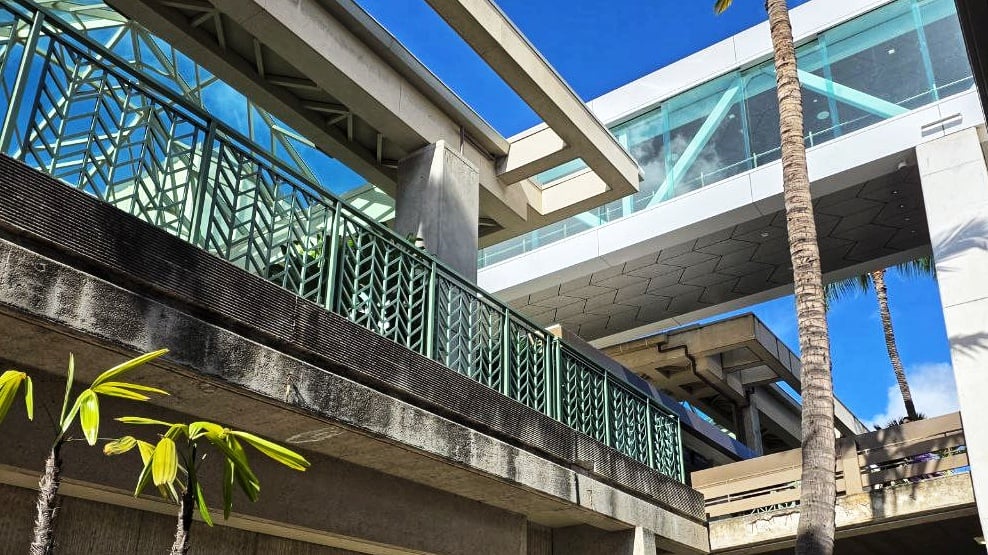

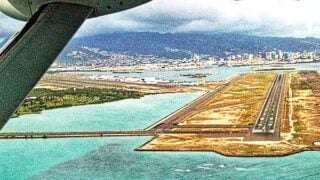
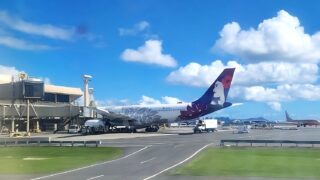
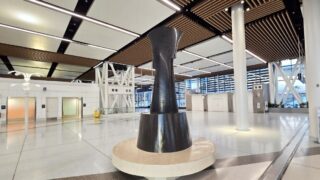
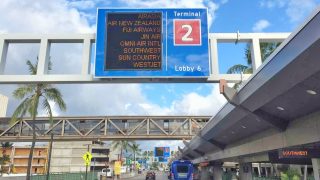
Where can we park. I want to ride to check it out.
Add to this that families going on vacation or airline crews commuting to work cannot use the rail as there is no overnight parking permitted at the rail parking lots.
Your article fails to mention that there are reasonable taxi fares from the airport to Waikiki, such as Charley’s Taxi flat rate of $36 each way, which I have used.
I went to leeward community station and found there are no provisions for parking. I don’t have someone who can drop me off. How are riders supposed to get there? Good luck getting riders Skyline!! Does that make any sense?
HART is the poster child for incompetence and naked corruption, run and managed by folks who are clearly out of their depth.
2020s opening of the Honolulu Rail takes 30 years to connect to 1940s airport, and still does not connect to Waikiki. This speaks volumes about the state government dysfunction.
First time visitors in any city with a subway/rail connection from the airport face the same issues in any big city, be it Vancouver, London, New York, etc. The system is not designed for tourists carrying lots of luggage. It is designed to hopefully make it easier for residents to get to were they want to go.
As to the delays in completing the system welcome to the world of mass transit projects. Ask someone in New York City how long they have been waiting for the Second Avenue subway to be completed. Over 70 years at this point and still no end in sight. Funding is always an issue for these projects.
Be glad it has reached the point it has and enjoy what you have while waiting for it to reach its intended destination hopefully in the not too distant future.
I am very excited about the upcoming extension of the rail system! Perfect timing as we are visiting family in Kapolei area right after the opening. Last year I took the bus from HNL to Aloha Stadium and then transfered to the rail and rode it to the end. Very clean, efficient. It was just me and a few local workers. I’ll update with a comment after our journey this week.
It’s still not user friendly for visitors or residents arriving with large luggage. It may be easy to hop on SKYLINE from the airport to Middle Street, however, from that point on, to hop on “THE BUS” to continue on to Ala Moana or Waikiki has it’s restrictions. “THE BUS” has luggage restrictions and with that, they won’t let you board. It’s much easier to take a taxi, LYFT or UBER from the airport to Ala Moana or Waikiki, which is where I would want to go.
I use the rail to get some step work in now that I am retired. My service dog likes it to.
Myself, after ‘95’ 7-10 day visits, business and pleasure, it’s finally here, and tge purpose was always to bring west Oahu to Honolulu International and eventually Ala Moana, hard to believe it’s been 50 years! To Waikiki, that would be a disaster, forcing condemnation and a hideous idea that betrays the natural beauty of Waikiki and the Bay, with a raised ‘L’ along either Kalakaua or Kuhio 🏄♂️🌴🌊🍍. What should happen is have a Main Terminus that connects to ‘Da Bus’, Cab and Car Rental from Honolulu International.
I thought the first phase of HART was built for Residents and the continuation to Ala Moana and Waikiki would do more for visitors with hopefully continuation to UH Manoa as a third phase.